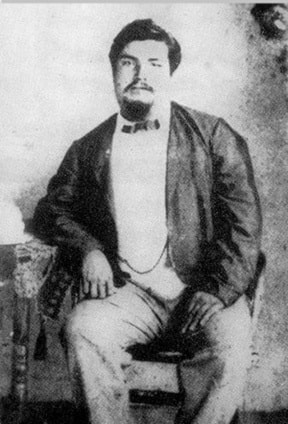It must have come as a shock to Victorians to learn that their charming visitor had a Dr. Jekyll and Mr. Hyde personality.
After 180 years Hawaii’s fabled sugar industry came to an end in 2016 with the shutting down of the islands’ last commercial sugar cane plantation. A&B Sugar’s decision to switch to mixed agriculture came after 34 years of steadily declining sales.
Long before tourism it was sugar farming that drew immigrants to Hawaii and fuelled the economy. Not all of them came voluntarily, however, it long being the practice to kidnap natives from isolated South Seas islands for slave labour, a practice known as blackbirding.
Although you’d never have guessed it at the time, one of Victoria’s tenuous connections to this evil trade was Capt. Bully Hayes, the broad-beamed, jovial master of the ship Rona who called at Victoria in August 1867 with a cargo of tropical fruit and an exciting tale of having rescued those aboard a wrecked missionary vessel. For two weeks he charmed Victorians with his piety, personality, generosity and impeccable manners. Not to mention his gold, of which he seemed to have plenty, and which he spent lavishly.
Can it be wondered at that he was welcomed by Victorians? Not only was he charming but he’d done so much to relieve the suffering of the wrecked missionaries. As a memento of his voyage he donated a number of curiosities (beautiful shells, corral, native cloth, spears, battleaxes and other handicrafts) from the South Pacific to the local chapter of the missionary society to sell at auction, the proceeds of which were to go to the purchase of books for the South Pacific missionaries.
In short, he was a hit with those with whom he came in contact and many were sorry to see him go. All, it seems, had been taken in by his gallantry, with even the Colonist (after expressing its gratitude for the generous supply of oranges and coconuts that he’d dropped off at their office) referring to him as the “gentlemanly” Capt. Hayes.
When the Rona cleared port in mid-September to return to the South Pacific she had on board three Victorians as passengers, Bob Wilson and two unnamed young women who’d recently been employed at the Park Hotel, Beacon Hill. Hayes further demonstrated the gallantry he’d deployed so far by installing a tricord Kirkman piano in his ship’s saloon for the ladies’ amusement. Upon being towed into the Strait of Juan de Fuca by the tug Isabel, Rona and company were off for the ‘Feejee’ Islands with lumber and salmon.
All of which must have made it a shock for Victorians when they next heard of the popular mariner who, it turned out, had a Dr. Jekyll and Mr. Hyde personality. The perfect gentleman and host on shore, he was a holy terror at sea, one who was feared and hated throughout the South Seas.
All this came out a year and a half after Hayes’s Victoria visit, when he was again the subject of discussion — one totally opposed to the genial persona of his stay in 1867.
It fell to the Colonist to reveal the “gentlemanly” mariner’s flip personality, this one right out of the pages of Robert Louis Stevenson. Not only that, he was on the run, wanted in Australia and California, the latter charge, of piracy, alleging that he’d stolen the bark Ellenita in San Francisco in 1859.
Now it was revealed that his real occupation, between isolated acts of piracy and rescuing missionaries, was that of a blackbirder — the kidnapping and sale of Tahitian natives as forced labour to Australian sheepmen.
In fact, upon sailing from Victoria in September 1867, he’d returned to Tahiti to resume his infamous calling as a slavemaster. But this voyage of the Rona was his last. After falling out with his first mate he challenged him to a duel.
The Rona anchored, a boat was lowered and all rowed to a nearby island.
As the crew watched Hayes and the mate were each given a pistol. The command to proceed was given and both men paced the required number of steps, turned and fired.
Hayes should have confined himself to kidnapping natives at gunpoint which was more his style and considerably safer, as the mate fired first, his pistol ball finding its mark in Hayes’s broad midriff. Death quickly followed.
No sooner did Hayes crash to the sand than the others were rushed by a party of armed natives who’d watched the duel from the jungle. The moment they saw their long-time nemesis fall they charged. As the victorious mate and the crewmen ran for their lives, the natives fell upon Hayes’ body and cut off his head.
